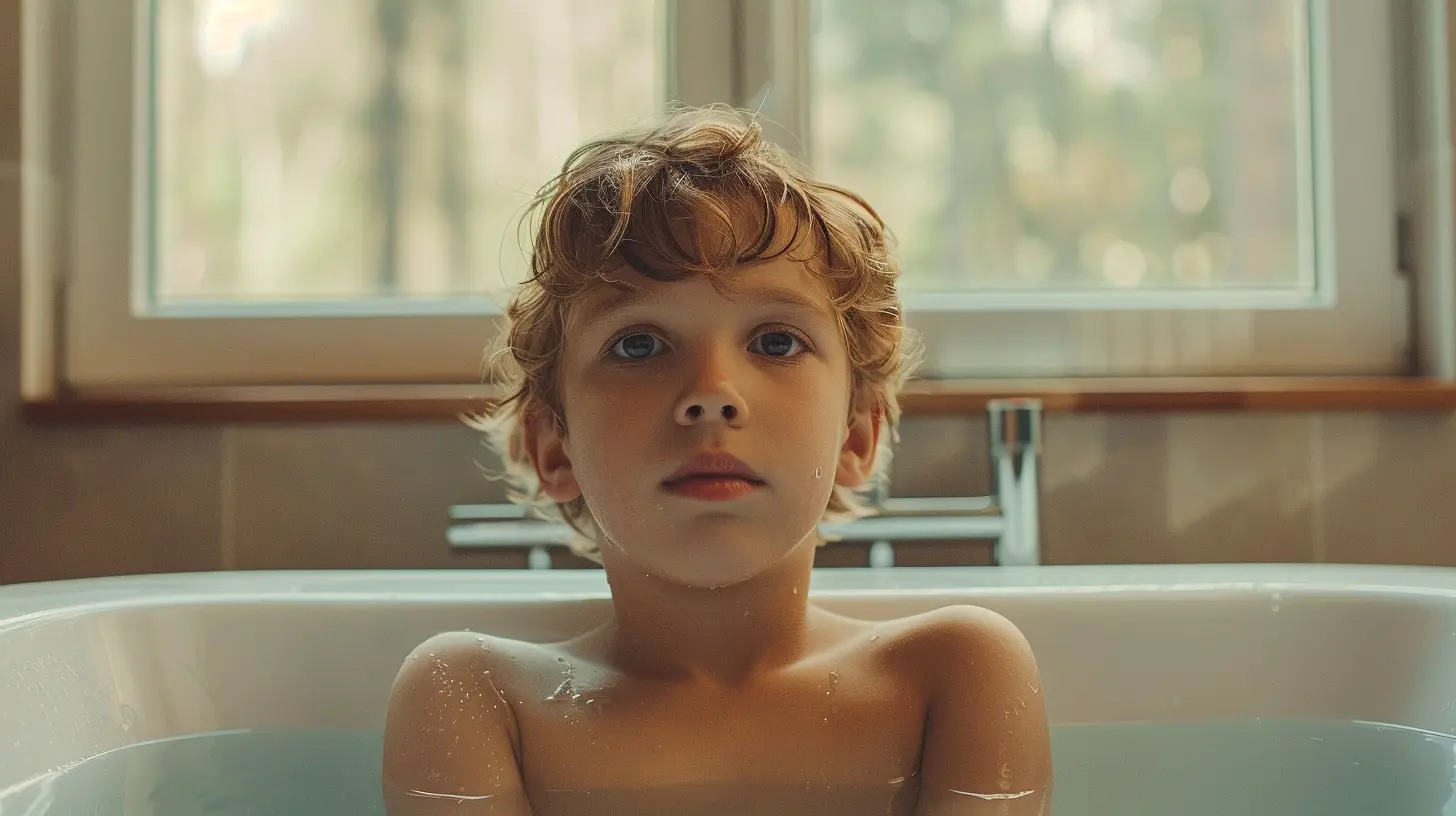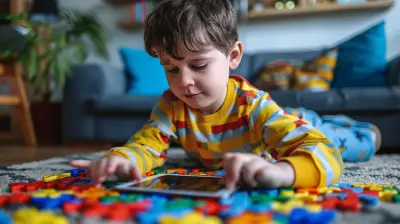How to Teach Your Child the Value of Self-Care
21 November 2025
Let’s get real honest for a moment—parenting is a wild ride. You're juggling work, laundry, meals, tantrums, and somewhere in the middle of all of it, you're trying to raise a kind, confident, happy little human. Sound familiar?
Now, amid the chaos, teaching your child about self-care might not seem like a top priority. But here’s the thing: if we want our kids to grow up emotionally strong, mentally balanced, and truly happy, then self-care isn’t optional—it’s essential.
So let’s talk about how to teach your child the value of self-care. Not just bubble baths and bedtime stories (though those are nice), but real, soul-nurturing, stress-busting, self-loving habits. We’re going to break it down, make it simple, and yes—make it fun.
What Even Is Self-Care (And Why Should Kids Care)?
Self-care isn't just spa days and meditating on a yoga mat (although if your kid's into that—amazing). At its core, self-care is about recognizing your needs and responding to them with kindness. It’s saying, “Hey, I matter,” and acting like it.For kids, self-care shows up in the tiniest ways:
- Taking a break when they’re overwhelmed
- Drinking water without being nagged
- Saying “no” when something feels wrong
- Expressing emotions instead of bottling them up
When children learn how to take care of themselves, they become more resilient, more confident, and way better at handling life’s curveballs.
Start With You: Be the Mirror
Let’s be real—kids don’t do what we say. They do what we do.So if you're constantly stressed, saying yes to everyone, burning out, and never taking a moment to breathe, guess what? That's the example you're setting.
Want to raise a child who values self-care? Live it out loud.
Show them you matter to yourself. Pause during a busy day to stretch. Say, “I’m feeling overwhelmed. I’m going to take a five-minute walk.” Make rest, joy, and boundaries normal.
Because the truth is, you're their biggest influence. If they see you honoring your own well-being, they’re more likely to treat their own mental and emotional health with respect.
Make Self-Care a Family Value
Think of self-care like family dinner. It's better when you all show up.Make it a shared priority. Not a “kid thing” or a “grown-up problem,” but a family-wide vibe.
Here are some easy ways to make self-care part of your family's daily life:
- Create a calm corner – A cozy spot with pillows, books, or sensory toys where anyone can go to relax.
- Check-in chats – Quick “How are you feeling today?” convos at dinner or bedtime.
- Weekly wind-downs – A Sunday evening routine where everyone does something that helps them recharge.
- Gratitude games – Who can name the most awesome thing about today?
This builds emotional intelligence, connection, and a shared language around wellness. It's like a team sport—everyone’s playing together.
Make It Fit Their Age
Self-care for a toddler? Not quite the same as self-care for a teenager.Let’s break it down by age so you can meet your child where they’re at.
For Toddlers and Preschoolers (Ages 2–5)
At this age, self-care starts with the basics: hygiene, routines, and learning to name emotions.- Let them brush their teeth with a fun song.
- Teach them words like “happy,” “sad,” “frustrated.”
- Start using phrases like “It’s okay to take a break” or “Let’s breathe together.”
Bonus tip: Use books and characters to reinforce the message. Daniel Tiger is basically a self-care guru in tiger form.
For School-Age Kids (Ages 6–12)
Now we’re getting to the good stuff. Elementary-aged kids can begin to understand self-care as a way to recharge.- Introduce simple mindfulness techniques—like deep breathing or guided meditations.
- Encourage hobbies they enjoy just for fun, not performance.
- Help them recognize stress or anxiety and give them tools to cope.
This is also the age where you can start talking about boundaries—like saying no to playdates when they’re tired or telling a trusted adult if someone makes them uncomfortable.
For Teens (Ages 13–18)
Teenagers need self-care more than ever. Hormones, peer pressure, academic stress—it’s a lot.- Teach them to listen to their gut instincts and respect their emotional needs.
- Talk openly about mental health—therapy, journaling, and social media boundaries.
- Support their need for alone time or space.
- Normalize saying “no” to overcommitment and burnout.
This is also a great time to introduce time management as a form of self-care (because cramming for tests at 2 a.m. is not it).
Let them know: caring for yourself isn’t selfish. It’s smart.
Teach Emotional Literacy First
Ever tried asking your kid, “What’s wrong?” and gotten a shrug?Emotional literacy helps kids recognize, name, and express what they feel. Without it, self-care is nearly impossible.
Start simple:
- “You look sad, is that how you feel?”
- “I noticed you’re getting frustrated. Want to talk about it?”
- “What does your body feel like when you’re nervous?”
Use feelings charts. Draw faces. Model emotional vulnerability by talking about your own feelings too. ("Mom felt really anxious today. So I took a few minutes to just breathe.")
The more they know themselves, the easier it is to care for themselves.
Make It Fun and Not a Chore
Kids learn best through play. So let’s not turn self-care into homework.Instead, infuse it with fun:
- Create a “self-care menu” with activities they can pick from (coloring, jumping jacks, reading, etc.)
- Do a silly dance break to reset the mood.
- Let them build their own self-care kit with calming items (stuffed animals, fidget toys, snacks).
- Use music, movement, and games to explore emotions and stress relief.
The goal is for them to associate self-care with feeling good—not just something they have to do when they’re overwhelmed.
Be Consistent, Not Perfect
Spoiler alert: you won’t get it right every time. And that’s okay.There will be days when your child melts down and throws their journal across the room. There will be moments when you forget your own advice and snap.
That’s normal. Progress over perfection.
Keep the conversation going. Keep modeling. Keep reinforcing the idea that taking care of ourselves isn’t a luxury—it’s a lifestyle.
Common Challenges (And How to Handle Them)
Even with the best intentions, teaching self-care to kids comes with bumps in the road. Let’s tackle a few common struggles:“They Don’t Want to Talk About Their Feelings”
Totally normal. Try these ideas:- Use prompts like “What was the best part of your day?” instead of “How are you feeling?”
- Draw together and talk through the art.
- Use stories or shows as conversation starters.
“They Think It’s Boring”
Again—normal. Try to:- Pair self-care with rewards (“Let’s light a candle and read your favorite book together!”)
- Keep sessions short and fun.
- Let them take the lead with what relaxes or energizes them.
“I Don’t Know Where to Start”
Start small. Pick one habit—like daily check-ins or quiet time before bed. Build it into your routine and expand from there.Remember, small steps build lifelong habits.
Long-Term Benefits You’ll Be Grateful For
When you teach your child the value of self-care, you’re giving them a gift that lasts forever.They’ll grow up:
- More in tune with their feelings
- Better at handling stress
- More compassionate toward themselves and others
- Stronger in their boundaries
- Mentally and emotionally resilient
And honestly? In a world that’s constantly shouting, “Do more, be more, go faster,” knowing how to pause and take care of yourself is a superpower.
Final Thoughts: You’re Already Doing Better Than You Think
Feeling overwhelmed? That's okay. Teaching your child self-care doesn't require perfection—it starts with intention.Start with one conversation. One moment of slowing down. One deep breath together.
Self-care isn’t a destination. It’s a daily invitation to show up for yourself—and showing your child how to do the same is one of the greatest lessons you’ll ever teach.
So take it one step at a time. You’ve got this—and so do they.
all images in this post were generated using AI tools
Category:
ParentingAuthor:

Paulina Sanders

